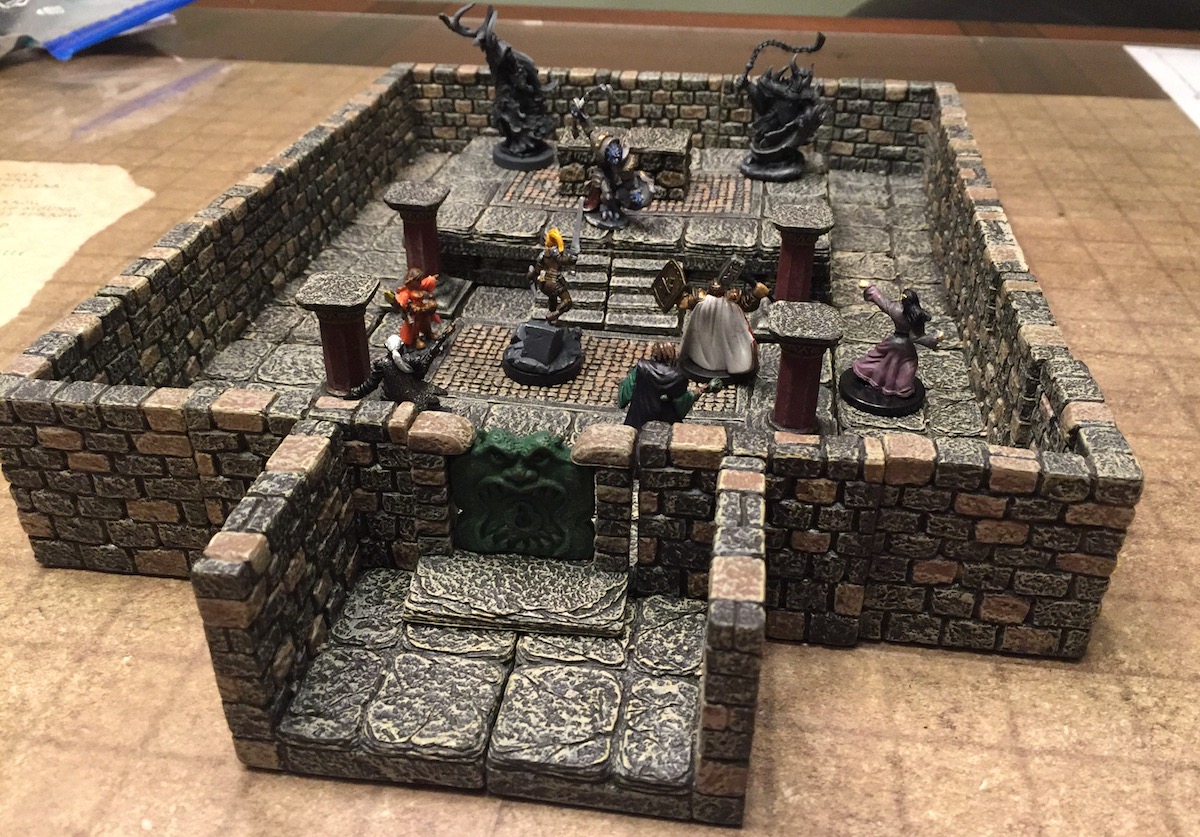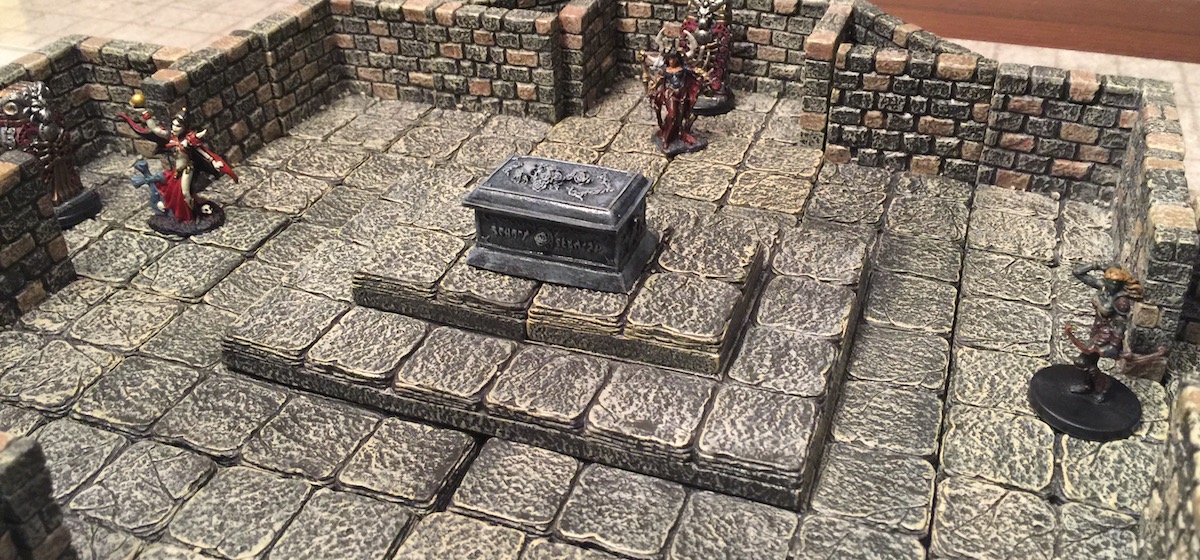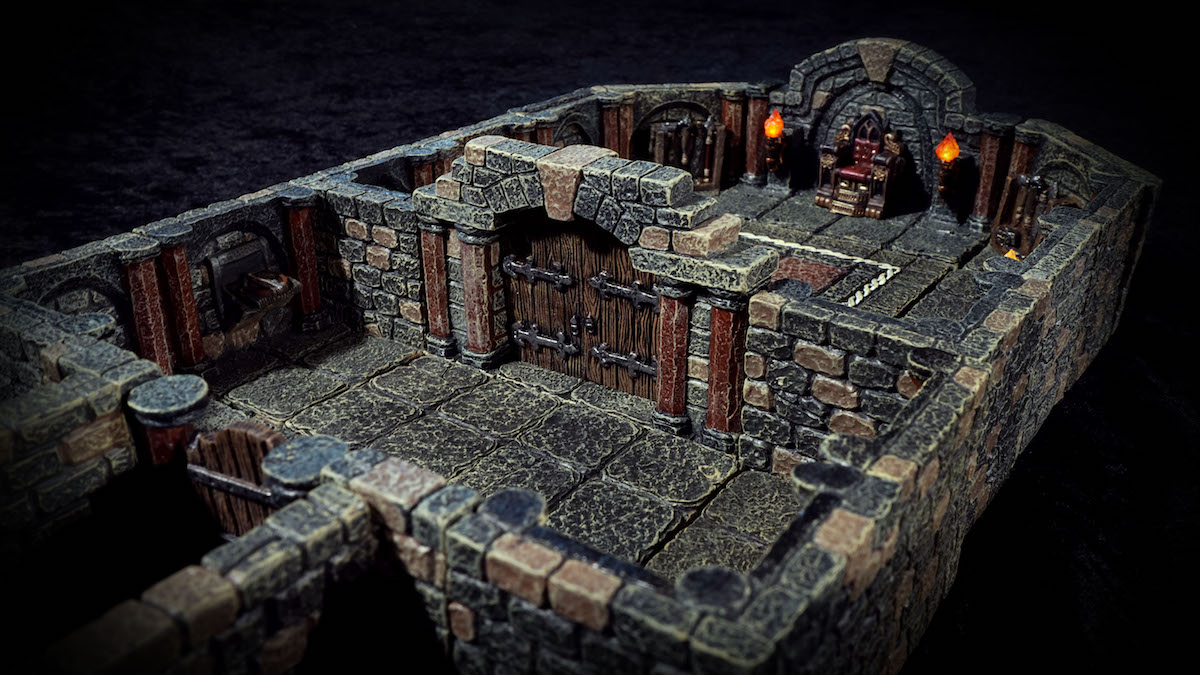New to Sly Flourish? Start Here or subscribe to the newsletter.
Dwarven Forge Buyer's Guide
by Mike on 3 July 2017
Note: This article was updated on 20 October 2024 from the original published in June 2010 and 2017.
One of the interesting things about the RPG hobby is the extreme range of the cost to play. Essentially, this range goes from zero to almost infinity.
If you want to learn more about playing D&D for next to nothing, check out Playing D&D on a Budget.
This article goes the other direction; into one of the higher potential costs in our hobby: 3D terrain. In particular, we'll be looking at the best 3D terrain available for tabletop fantasy gaming: Dwarven Forge.

A Single viewpoint from a Decade of Experience
This review comes from more than ten years of experience with Dwarven Forge products, including products from all of their previous Kickstarters and a bunch of their resin-based products before they came up with Dwarvenite. It's based on its use at hundreds of games, most at home but some at local game shops as well.
However, these experiences are just one view. My recommendations here fit a particular philosophy and that philosophy may be very different for other collectors. My goal for this guide is to focus on the most useful, versatile, cost-effective, and easy to set up pieces. We can break this down into two other ideas:
Get big pieces that matter.
Get a lot of versatile pieces.

Focusing on the Dungeon
For this article we're going to focus on Dwarvenite dungeon pieces. Dwarven Forge makes tons of sets for cities, caverns, mountains, swamps, forests, and more. You can completely lose yourself in this hobby.
Walls, Floors, and Corners
The core dungeon Dwarven Forge sets focus on three primary components: walls, corners, and floors. With enough of these three pieces we can build thousands of different rooms, passages, and corridors. We can build small rooms inside of bigger rooms or rooms with walls that act as cover. Though it seems like these three pieces alone wouldn't be enough, we can do a lot with them. If you start with dungeons, check out the Dwarven Forge dungeon core sets. You'll want to aim for enough pieces to build three or so big rooms. I like a mix of their standard dungeon walls and vaulted dungeon walls so you can build utilitarian chambers and fancier chambers.
Elevation
Moving from a 2d to 3d battle map really benefits from making use of elevation and we can accomplish this with terrain trays. Terrain trays are metal plates with a cloth covering decorated with stone on one side and either lava, water, or acid on the other. The come in 12" squares and some smaller varieties. All of them work well for elevation. Dwarven Forge stilts are inexpensive magnetized stilts that stick to the bottom of a terrain tray and line it up perfectly with the edge of a wall piece. Thus we can set up two-tier layouts easily.
You'll likely want to grab some stairs so it's clear how characters get from one level to another.
All Dwarven Forge pieces now include magnets on the bottom so the stick to terrain trays and allow you to "fly in" a whole 12" square room when you need it. You can use pizza stands to store your rooms and then pull them out, fully set up, when it's time to drop them on the table.
With walls, corners, floors, and elevation we can built all sorts of amazing halls, rooms, and chambers with elevated platforms, altars, and interesting places for our characters to explore.

Filling Out the Dungeon With Flair
Filling out our dungeon rooms with cool accessories makes them unique and fantastic. Dwarven Forge has wonderful light-up accessories to fill out a room but we can also pick up room accessories from Reaper Bones or even model train or aquarium accessories.
Like our philosophy of focusing on important versatile pieces, we can choose the accessories we're likely to use a lot. Here's a short example list:
- Braziers (light-up ones are great).
- Sarcophagi
- Altars
- Platforms
- Statues (unpainted miniatures work great)
- Decorated Pillars
- Floor Runes and Glyphs (cardboard or plastic dungeon tiles work well)
Dwarven Forge sells a bunch of these flair pieces and it's worth picking them up. The light-up pieces are expensive but they have huge wow-factor when they hit the table. Some of the more advanced dungeon pieces like the LED arched wall are fantastic set pieces.
Mixing Media
One great way to make the most out of Dwarven Forge is to mix it with 2D battle maps, such as Paizo's Pathfinder Flip Mats. We can use four corner pieces to make a small 3D building on a town map, for example, or use the elevation blocks to build a small ziggurat in the center of a forest. With a four-inch piece of card board we can build square towers out of stacks of corner and wall pieces. We can use 2" blocks and floors to build an elevated platform on one part of the map. Even just throwing out some wall pieces onto a battlefield can add some interesting cover for characters to hide behind.
Not a Necessity but a Wonderful Aid
Dwarven Forge isn't cheap. If these products are outside of your price range, fear not. When we think about the joy we get playing RPGs, accessories like Dwarven Forge add to the experience but aren't required. We can have a whole lot of fun playing D&D with hand-drawn maps on a blank flip mat or even completely in the theater of the mind. We're also not including the high cost of miniatures in any of this discussion; thats a whole other topic.
That said, for people who are really into this hobby of ours and have the money to spend on things like this, there is no better tabletop dungeon accessory than Dwarven Forge.
Related Articles
Share this article using this link: https://slyflourish.com/dwarven_forge_buyers_guide.html
Subscribe to Sly Flourish
Subscribe to the weekly Sly Flourish newsletter and receive a free adventure generator PDF!
More from Sly Flourish
Sly Flourish's Books
- City of Arches
- Return of the Lazy Dungeon Master
- Lazy DM's Companion
- Lazy DM's Workbook
- Forge of Foes
- Fantastic Lairs
- Ruins of the Grendleroot
- Fantastic Adventures
- Fantastic Locations
Have a question or want to contact me? Check out Sly Flourish's Frequently Asked Questions.
This work is released under a Creative Commons Attribution-NonCommercial 4.0 International license. It allows reusers to distribute, remix, adapt, and build upon the material in any medium or format, for noncommercial purposes only by including the following statement in the new work:
This work includes material taken from SlyFlourish.com by Michael E. Shea available under a Creative Commons Attribution-NonCommercial 4.0 International license.
This site may use affiliate links to Amazon and DriveThruRPG. Thanks for your support!









